The Hall of Bulls Page Number Art History Book
In collaboration with Noël Coye, Conservateur du patrimoine, Ministère de la Culture et de la Communication, France.
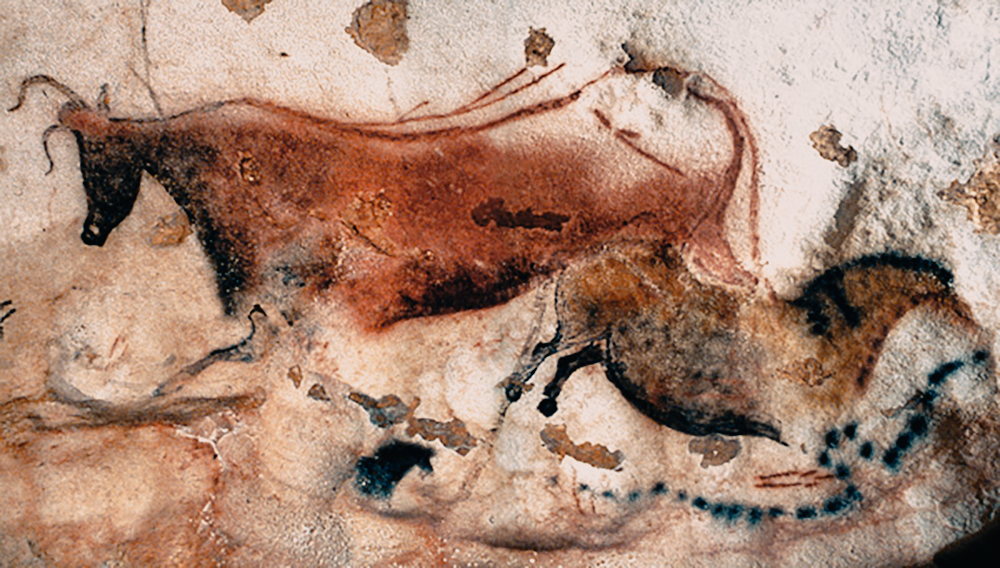
Blood-red Moo-cow & First Chinese Equus caballus
© Due north. Aujoulat (2003) © MCC-CNP
Lascaux is famous for its Palaeolithic cavern paintings, establish in a circuitous of caves in the Dordogne region of southwestern French republic, considering of their infrequent quality, size, sophistication and antiquity. Estimated to exist up to 20,000 years old, the paintings consist primarily of large animals, one time native to the region. Lascaux is located in the Vézère Valley where many other decorated caves have been establish since the beginning of the 20th century (for example Les Combarelles and Font-de-Gaume in 1901, Bernifal in 1902). Lascaux is a complex cavern with several areas (Hall of the Bulls, Passage gallery) It was discovered on 12 September 1940 and given statutory historic monument protection in dec of the same year. In 1979, several decorated caves of the Vézère Valley - including the Lascaux cave - were added to the UNESCO Globe Heritage Sites list. But these hauntingly cute prehistoric cave paintings are in peril. Recently, in Paris, over 200 archaeologists, anthropologists and other scientists gathered for an unprecedented symposium to discuss the plight of the priceless treasures of Lascaux, and to find a solution to preserve them for the future. The Symposium took place nether the aegis of France'southward Ministry of Civilization and Advice, and presided over by Dr. Jean Clottes.
Sections accept been identified in the cave; the Great Hall of the Bulls, the Lateral Passage, the Shaft of the Dead Human, the Bedroom of Engravings, the Painted Gallery, and the Sleeping room of Felines. The cave contains almost 2,000 figures, which can be grouped into three main categories - animals, homo figures and abstract signs. About of the major images have been painted onto the walls using mineral pigments although some designs have as well been incised into the stone.
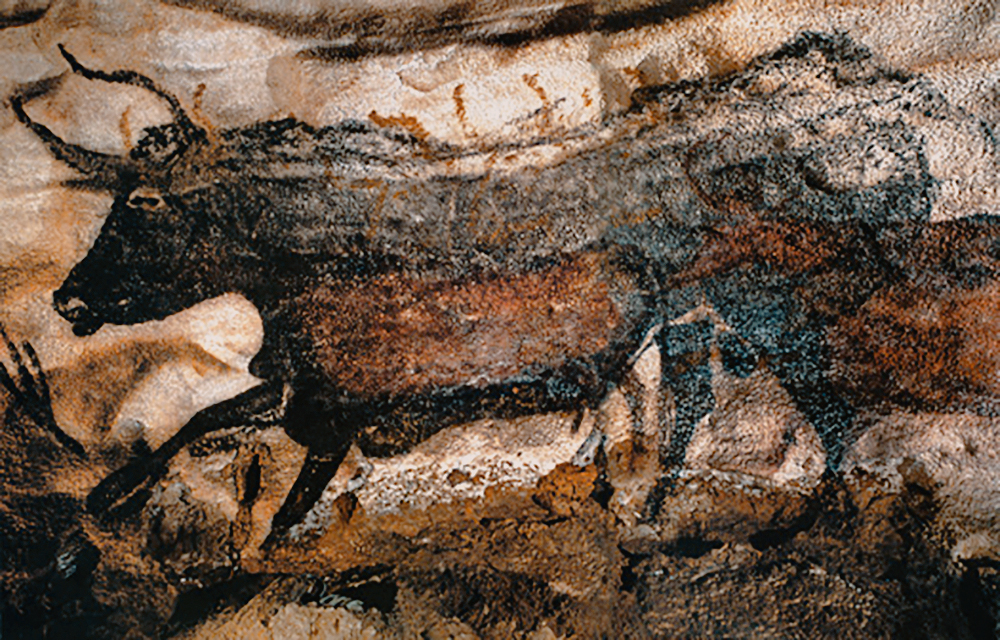
© N. Aujoulat (2003) © MCC-CNP
Of the animals, equines predominate [364]. There are 90 paintings of stags. Too represented are cattle, bison, felines, a bird, a bear, a rhinoceros, and a man. Among the about famous images are 4 huge, blackness bulls or aurochs in the Hall of the Bulls. One of the bulls is 17 feet (five.ii 1000) long - the largest animal discovered so far in cave art.
Additionally, the bulls appear to be in motion. There are no images of reindeer, even though that was the principal source of food for the artists. A painting referred to as 'The Crossed Bison', found in the bedchamber chosen the Nave, is often held as an example of the skill of the Palaeolithic cave painters. The crossed hind legs show the ability to use perspective. Since the yr 2000, Lascaux has been beset with a fungus, variously blamed on a new air conditioning system that was installed in the caves, the apply of high-powered lights, and the presence of too many visitors. Every bit of 2006, the situation became fifty-fifty graver - the cave saw the growth of black mold. In January 2008, authorities closed the cavern for 3 months, even to scientists and preservationists. A single individual was allowed to enter the cavern for 20 minutes once a calendar week to monitor climatic conditions.
Lascaux Cave Paintings Symposium
Chronicle of the Sessions
For the past few months, the scientific community has been upset by the news of potential threats upon the conservation of the Lascaux paintings. Post-obit the replacement of the motorcar helping with the climate inside the cave, micro-organisms would have pervaded the environment and no efficient response would have been found to block their progress, thus threatening the conservation of paintings and engravings.
Presided past Jean Clottes and nether the aegis of the Ministry building of Culture and Communication, the symposium was organised in iii sessions, too a kickoff introductory 1. The sessions were centred about three themes directly connected with the problems identified: the surroundings (i.due east. the geological, climatic and concrete-chemical conditions for the biological dynamics in the cave); the micro-organisms (the micro-biological dynamics themselves) and the relation between conservation and the public (a central trouble in heritage management).
Each session included several presentations on the land of the fine art, followed by a contend, for which experts from different countries and specialities were invited: these offered a first comment on the presentations, before the debate was opened to a larger audience of over one hundred researchers.
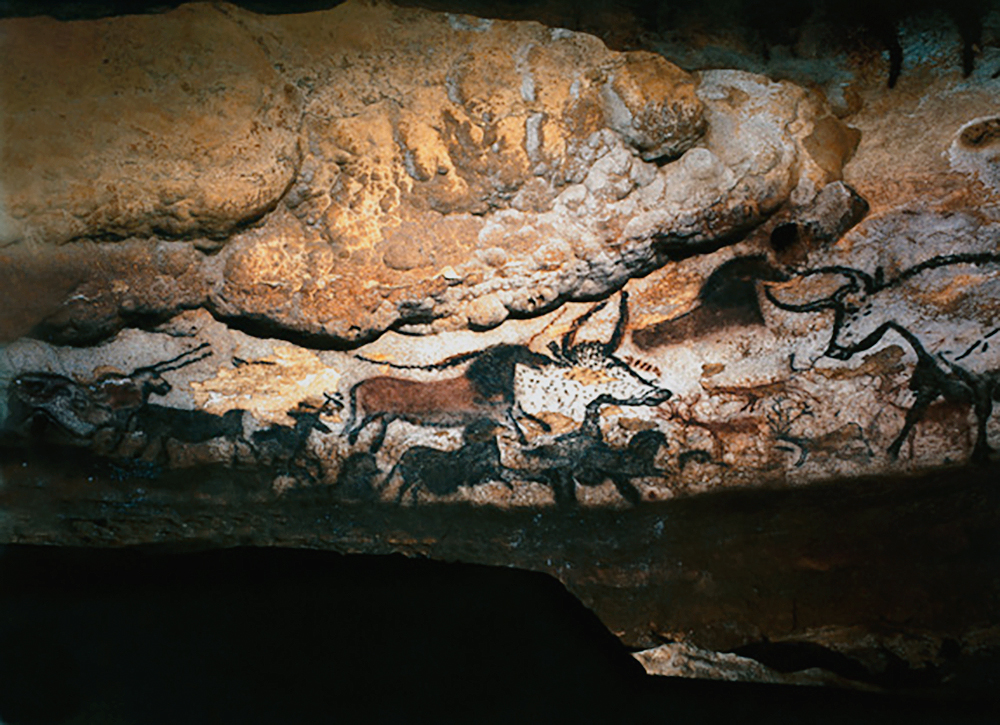
© N. Aujoulat (2003) © MCC-CNP
The seminar was introduced by Jean Clottes, who set up the framework of the discussions: transparency, an open clear and international fence, aiming at reaching useful recommendations concerning the problems identified. It is non so frequent that such a framework of debate is ready in order to face bug and contradictions in heritage management, some preferring to just offer 'criticisms' without any alternatives, frequently advertisement hominem and polemic. Science is something else altogether, though, and this symposium was a sit-in of it.
Marc Gauthier, the president of the cave'south Scientific Committee, presented the history of research and the ongoing work and principles of the 25 members Committee, which are focused on clear short and middle term objectives (to treat the disease and to identify its causes) with the ability to act fast. Afterward, Jean-Michel Geneste, director of the Centre National de Préhistoire, presented an overview of the main phases and events in the conservation of the cavern, later its discovery in 1940.
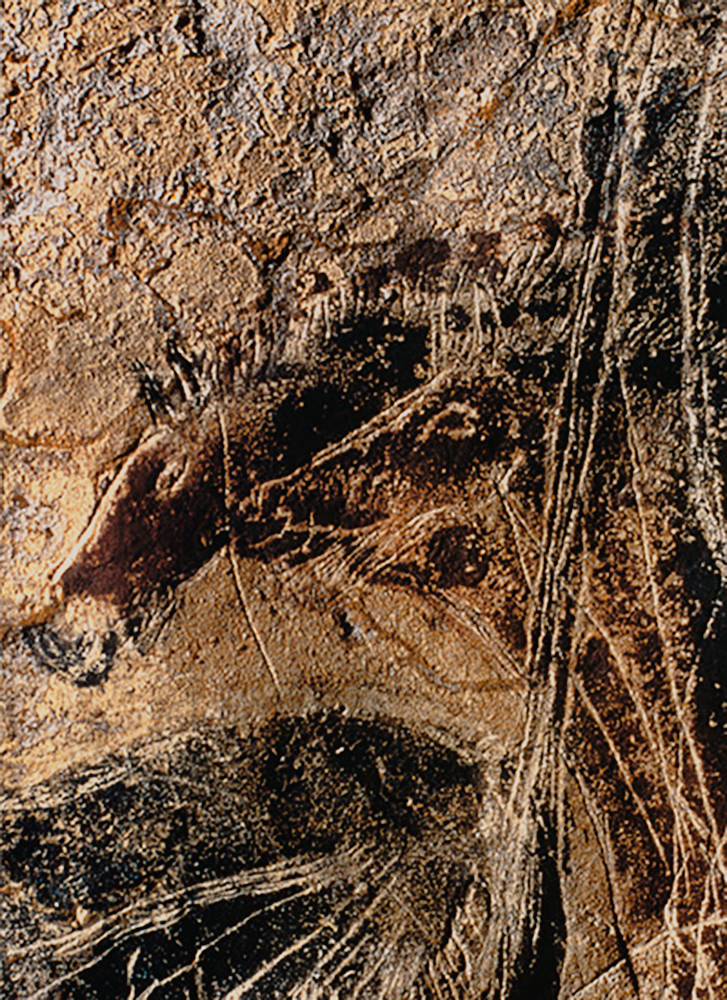
© N. Aujoulat (2003) © MCC-CNP
Globally, we thought that the discussion was clear and quite open, with the presence of several researchers that had, in a serious and firm way, criticised the activeness of the Scientific Commission. This enabled the participants to identify the axes of contradiction, but also those of convergence, an aim which must always be that of debates among scientists.
To showtime with the convergences, all speakers agreed to the need to give priority to the treatment of the disease. They considered that the irruption of white organisms, and after on of black ones, were the consequence of the modify of the acclimatising automobile, introduced in 2000 (some considering it as the principal crusade, whereas others judged it equally a goad).
As for the contradictions, these were centred first in the account of the process leading to the decision to change the auto, some willing to concentrate the discussion on this point, before discussing the possible solutions for the time to come. I would argue that even if it is e'er important to assess the processes and to identify the persons responsible for by errors, too much time seems to have been spent on this which would accept been better used on a give-and-take of the future.
In whatsoever case, the three thematic sessions enabled the participants to assess the state of the art and to define a frame of alternatives.
The session on the geologic and climatic environment was pb by J. Delgado Rodrigues, with the presentation of the hydrogeologic (Roland Lastennet) and climatic (Philipe Malaurent) contexts, as well as that of an excellent virtual model (Delphine Lacanette). These papers allowed us to empathize that the temper regeneration machine gear up upwards in 1957 needed to be replaced, due to its ageing, by an identical one, although in the end this was not the case. It too became clear that the succeeding problems of conservation of the cavern (the 'white disease' since 1955, the 'green disease' in 1960, white organisms since 2001, presently followed by black ones) were always caused by previous anthropic activity. This session was completed with a presentation on the conservation of the Altamira cavern, which made it clear that the efforts devoted to Lascaux accept no match elsewhere. The debate was widely participated in and enlivened by the audience (more than by the invited experts, including myself) and it ended so to speak without a singled-out determination: whereas the speakers centred their interventions on the demand to establish a motorcar to recover the climatic equilibrium prior to 2000, most of their critics were focused on the identification of responsibilities apropos the errors made in the past.
In the second session the central and most productive word of the symposium took identify. It was on the Lascaux micro-organisms and was directed by Robert Koestler. Isabelle Pallot-Frossard and Geneviëve Orial presented the micro-biological context and the strategies chosen to control it (biocides and repeated deportment, more than climatic management and cleanings), whereas Claude Alabouvette detailed the microbiotic ecology (stressing the augmentation of micro-biological diverseness in the zones affected by anthropic action). The work carried out at Lascaux was compared to the efforts of conservation of mural paintings in Japan (Takeshi Ishizaki). With this debate, it became articulate that, for the hydrogeologists and climatologists, the main paradigm seems to be the recovery of the equilibrium prior to 2000, whereas for the microbiologists this is not possible, the aim existence the search for a new equilibrium. The acceptance of the irreversibility of changes, likewise as of the augmentation of diverseness with each human intervention within the cave, were the basic ideas of this discussion, with a proposal to await into areas less affected by the works, as the Shaft, for species long gone elsewhere that might thus be re-introduced. The contradiction between strategies to diminish (equally suggested in the first session, simply as well by some in the second i) or to monitor the micro-biological action (equally proposed in the 2d session) thus became the eye of the word.
The terminal session, on the conservation of the painted caves and their wider knowledge by the public, introduced past a presentation on the Cantabrian caves and the risks they face (by Roberto Ontañon Peredo), not only stressed the technical dimension of the issue, but likewise the exemplary character of the Symposium. Information technology is quite encouraging to see that, confronted with a complex and highly visible state of affairs, the scientific community is capable of expressing itself in a forum, without hiding its differences simply likewise without sticking to these as an aim in themselves. The presence of various experts, French or not, working in French and other painted caves, was particularly positive.
The overall conclusions of these two days are that, first of all, they were an exemplary exercise of transparent scientific seriousness, with the presence of the people currently in accuse of the scientific management of the cave and of their academic opponents, in a context very efficiently coordinated by Jean Clottes. This is an example which unfortunately is not so frequent to discover in other international contexts. Lascaux being a site of major cultural relevance, it is very positive that the Symposium should have been participated in past the scholars truly interested in its safeguarding, whichever opinions they might entertain. The presence of people heading many international organisations, from ICCROM (Mounir Bouchenaki, who rightly considered the symposium every bit an exemplary result) to UNESCO's World Heritage Committee, reflected such a reality. One wishes that, following this symposium, a future Scientific Commission (already announced by the Minister of Culture) should overstate the diversity of the expertise (in particular geology) and human activity mainly with the aim to find new equilibriums based upon the growing diversity of life (as suggested by the microbiologists) rather than attempt to limit the micro-biologic diversity and to recover a long lost ecologic equilibrium. It is likewise desirable that the international organisms that were nowadays might contribute in an agile way for this purpose.
Luiz OOSTERBEEK
Secrétaire Général de l'UISPP (Union Internationale des Sciences Préhistoriques et Protohistoriques / Secretary General of IUPPS (International Wedlock of Prehistoric and Protohistoric Sciences)
Conclusions
Lascaux Cave Paintings Symposium
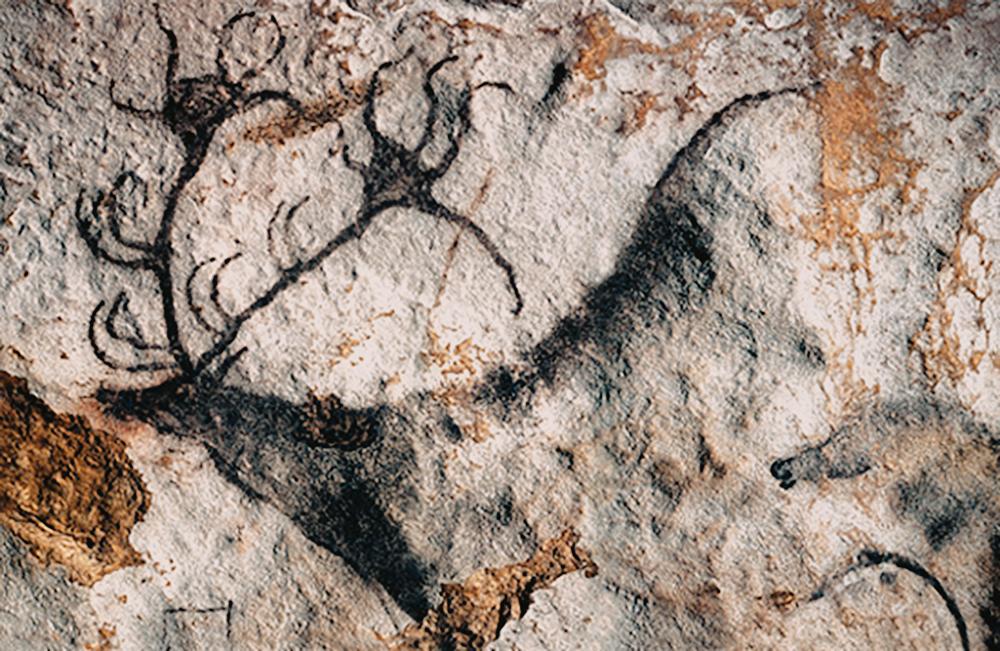
© N. Aujoulat (2003) © MCC-CNP
The Symposium "Lascaux and preservation issues in a subterranean environment" has generated huge interest, including in the press: out of the 267 registered participants, 21 were journalists. Information technology has likewise sparked international interest: other than France, seventeen countries from all continents were represented (South Africa, Germany, Commonwealth of australia, Bermuda, Brazil, Republic of cote d'ivoire, Spain, United states, Italy, Japan, Morocco, New Zealand, Portugal, Czech Republic, United Kingdom, Switzerland, Zambia).
The Symposium purported to be "open", since anyone could register on-line and freely participate if they wanted to. The sheer number and diversity of participants show that it was truly a nifty success. The sessions (including debates) were perfectly bilingual (English and French), thank you to simultaneous translation.
After these two particularly rich and dumbo days, my synthesis will focus on three main points: the evolution of the Symposium; the official announcements and main results; recommendations for the future.
The Development of the Symposium
Lascaux Cave Paintings Symposium
Firstly, I would like the Presidents of the sessions and the participants to excuse my stringency regarding the schedule. Information technology had to exist strict and as such it was. Reverse to what happens in most meetings of this type, we began each session right on time and all communications remained within the given fourth dimension frame. This was a necessary status so that the debates could last just as long every bit the presentations, whether questions were asked on all topics or diverse opinions were shared and discussion then followed. I would similar to thank wholeheartedly all participants for their consented efforts. In fact, each person took it and then much to centre non to exceed their half hour of communication that we were left with actress time (approximately ane hour and a half in total) for the debates...
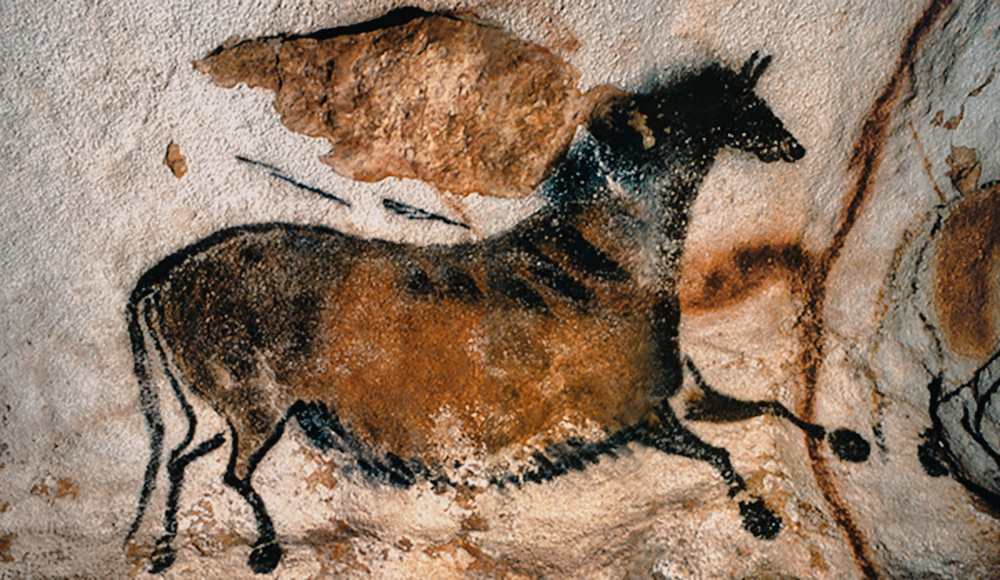
© Northward. Aujoulat (2003) © MCC-CNP
The presentations, which can exist viewed on-line, were focused on the principal elements of the preservation of Lascaux and the decorated caves, every bit well as on the history of Lascaux, the problems faced, measures taken and the current condition of the cave. Our colleagues from other countries, either speakers (Japan, Spain), or practiced special guests (South Africa, Germany, Australia, Usa, Italia, Nippon, New Zealand, Portugal, Czech republic), brought valued comparisons and shed dissimilar light on the topic. In fact, if the preservation of cave fine art is a shared issue and if at that place are then many threats to this essential heritage, there are many problems and solutions and we tin only learn from each other.
The many accounts given during and after the Symposium testify that the high quality of communication, along with the freedom and richness of the debates were recognized and appreciated. This meeting therefore satisfied its objective. All the facts regarding Lascaux were clearly presented, including the mistakes fabricated. The debates went equally planned, without concession or stonewalling, in complete transparency, whether information technology was with the decision-making procedure, the events which occurred, analyses carried out, obstacles or difficulties faced or perspectives for the time to come.
If it is obvious that not everything has been settled, that the sickness is not nevertheless cured and that the Symposium could not bring a miracle cure, nosotros can only promise that the misunderstandings which may have existed about the events of the last few years will be cleared up for those who actually care nearly one thing: saving Lascaux.
Announcements and Results Obtained
Lascaux Cavern Paintings Symposium
Either at the offset of or during the Symposium, Mrs Christine Albanel, Minister for Culture and Communication, and Mr. Michel Clément, Manager of Architecture and Heritage, fabricated several very interesting, physical announcements regarding Lascaux. During the communications, particularly those from Drs. Marc Gauthier and Jean-Michel Geneste, we also institute out that certain interesting decisions had been made and that projects were underway.
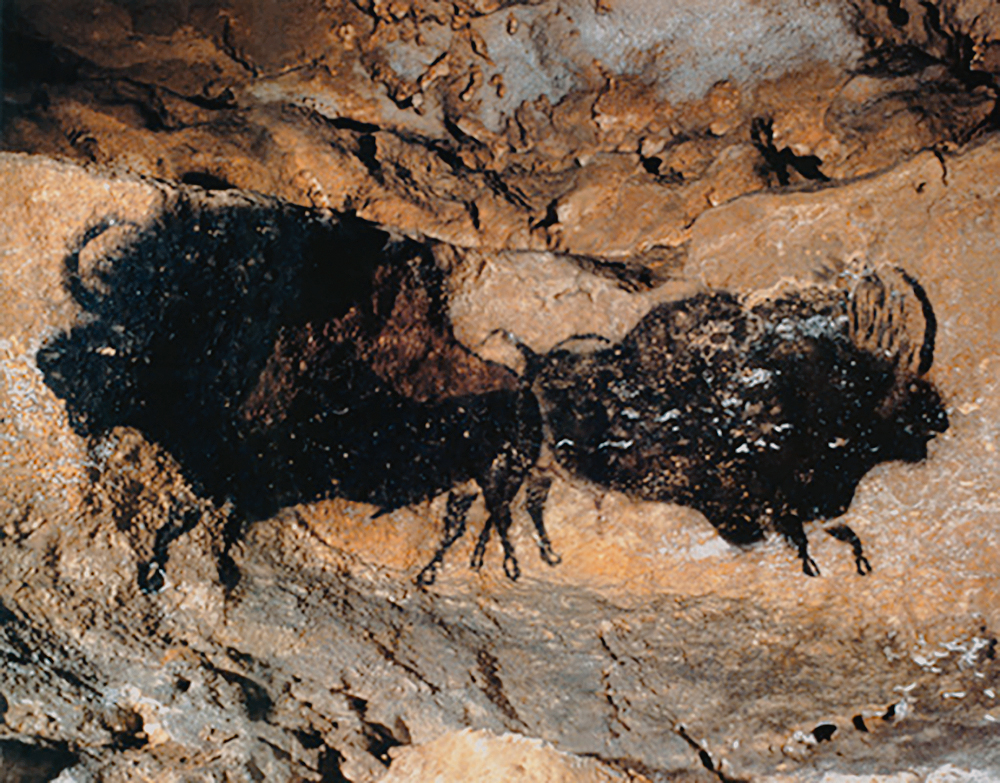
© N. Aujoulat (2003) © MCC-CNP
The outset of these announcements, which set the scene, was that - unsurprisingly... - Lascaux is considered past the Minister for Civilisation as a major priority, in such a way that coin is no object for inquiry and preservation. Such an declaration is so rare, in whatsoever country, that it must be highlighted.
The 2nd concerns the Scientific Committee of Lascaux, whose mission will end in a few months. A tribute was given to its President, Marc Gauthier, and to its members who take been striving to save the cave under very difficult circumstances. This committee, where interdisciplinarity should exist the rule, will be re-established in May 2009. It will exist fifty-fifty more than open up, more specialized and more independent. In particular, information technology will be separated from the steering Committee made up of administrators, naturally while maintaining communication between the two so that no efficiency is lost.
A laboratory-cave volition be selected, among several possibilities in the Dordogne surface area of French republic, in conditions very shut to those of Lascaux. It will be used for experimentations in natural surreptitious settings; these are essential but cannot be carried out in the decorated cave without take a chance. The results of these procedures will exist largely used to try and solve the problems faced at Lascaux.
The Lascaux cave itself has been recreated in 3D. The simulator re-creates its atmospheric condition, its morphology as well every bit its climatology; the bug can therefore be sorted out. Information technology is obvious that these two methods (laboratory-cave and simulator) combined will profoundly assist in understanding the phenomena and in making decisions.
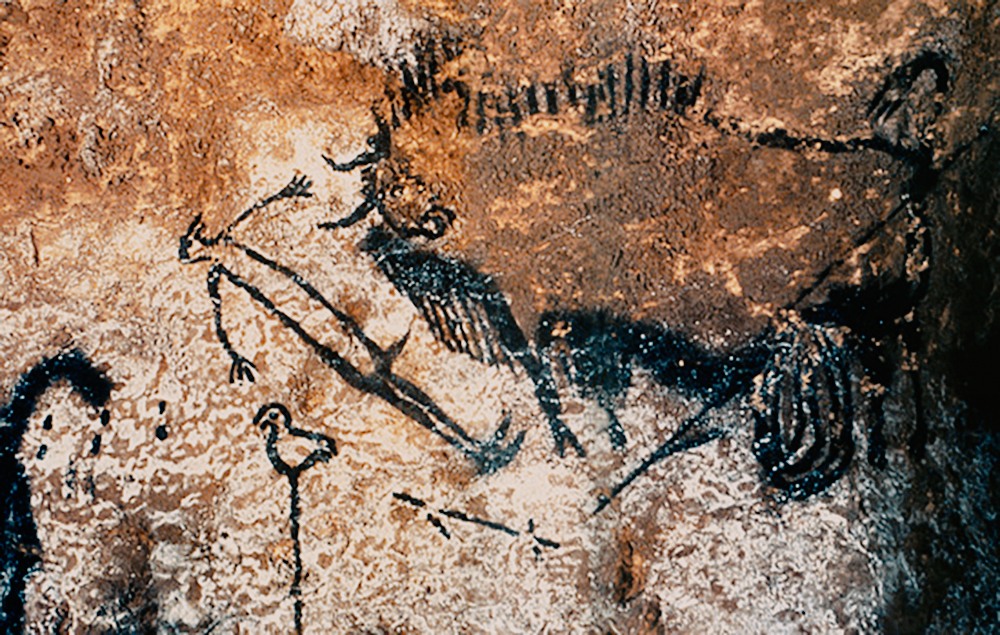
The Scene of the Dead Man
© N. Aujoulat (2003) © MCC-CNP
Last only non least, the long-awaited "sanctuarisation" of the Lascaux hill will finally be achieved. The replica (Lascaux II) should bring together the valley and roads and car parks should disappear from the hill. This is a full-scale project, for which there will be a collaboration with the local communities (Commune and Département).
All specifications about the status of Lascaux have been communicated. Marc Gauthier told us that fourteen painted or engraved animals (out of around 915) take been affected past the black marks, in the right-hand side of the cavern. This is still too many and any adverse outcome on the works of fine art in the cave, whatever information technology may exist, is sorely felt by those who dearest information technology, i.due east. all of united states. However, we are far from the cataclysmic announcements we may have heard or read. No, the frescos of Lascaux are not "condemned" and the cave is not in "danger of expiry"!
Finally, communications and discussions have enabled us to experience outset hand the complexity of the bug faced, along with - in this delicate and vulnerable setting - the difficulty of work conditions and decisions to exist made, often in an emergency.
The specialists have insisted on the following points
Nosotros take never had a static and stable equilibrium, on the opposite there have e'er been changes in certain climatic parameters, which could affect the preservation of works of fine art or wall surfaces
In this respect, several specialists have shown without a shadow of a doubt that the evolution of the climate since the get-go of the 'fourscore's brought about the halt of sure convection phenomena, an inversion of temperatures and air stagnation which was not known of beforehand. This means that any decision made regarding climatic assist must take these observations into business relationship, and that consequently the former climatic assistance principles must be modified
Singular torrential rain was recorded at the beginning of the 2000s. The restoration work undertaken - at the worst possible time - and the errors made acted like a goad and triggered micro-organic proliferations, the consequences of which are yet being experienced
Information technology would be impossible to return to a hypothetical original condition
Recommendations for the Time to come?
Lascaux Cave Paintings Symposium
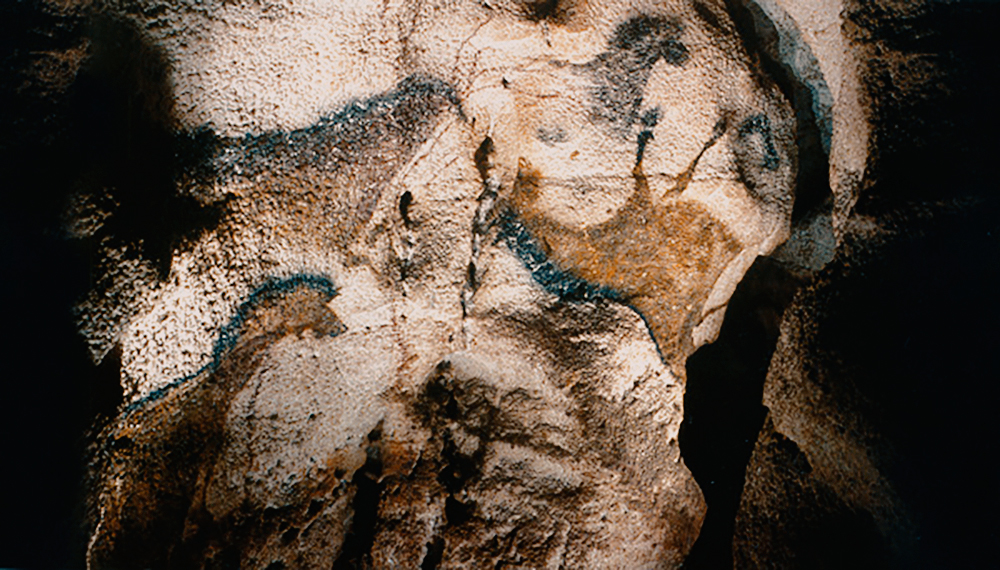
© North. Aujoulat (2003) © MCC-CNP
Comparisons take repeatedly been made with medicine, concerning diseases that Lascaux suffers from or has suffered from. It is true that all those who know the underground setting well know that it behaves just like a living organism, with its adaptation and cocky-regulation abilities or fifty-fifty the ability to regenerate when certain aggressions and changes remain within certain limits. To refer back to this comparing, it is necessary to adopt the most basic proverb used by medical doctors, that of the Hippocrates oath, Primum non nocere.
Transposed to the actions in the cave, this implies two master principles: never direct touch on delicate decorated walls; run impact studies earlier the implementation of whatever new curative policy. In the correct-paw side of the cave, we know that the surfaces are crumbly and that any brushing activeness, even with a very fine castor, will lead to a loss of substance. Such actions are to be forbidden in the decorated areas, since they will cause irreversible harm and will accept unpredictable results (infestations can occur over again).
The bear on studies to test the proposed therapeutic methods, rightly recommended by UNESCO, must be the rule. Some of them can be conducted in a laboratory, but the cosmos of the laboratory-cave described above would greatly facilitate these studies.
Microbiologists have repeatedly insisted on the fact that spraying biocide can have harmful secondary effects, for example in eliminating the microorganisms which can limit the proliferation of harmful mushrooms, or even in creating organic elements or detritus that some tin feed on.
Here are some examples of research that could be done in this field
Studying the genome of the microorganisms living on the walls, which can now be done with powerful and quick methods
Exploring the path of bacteriophage viruses
Testing diverse radiation which could stop the observed proliferations, or even reduce the melanin
Amongst the practical measures, information technology has been suggested (R.-J. Koestler) to re-install the airlock - known as the Bauer Airlock - isolating the right-manus side of the cave from the Hall of the Bulls and the Centric Gallery.
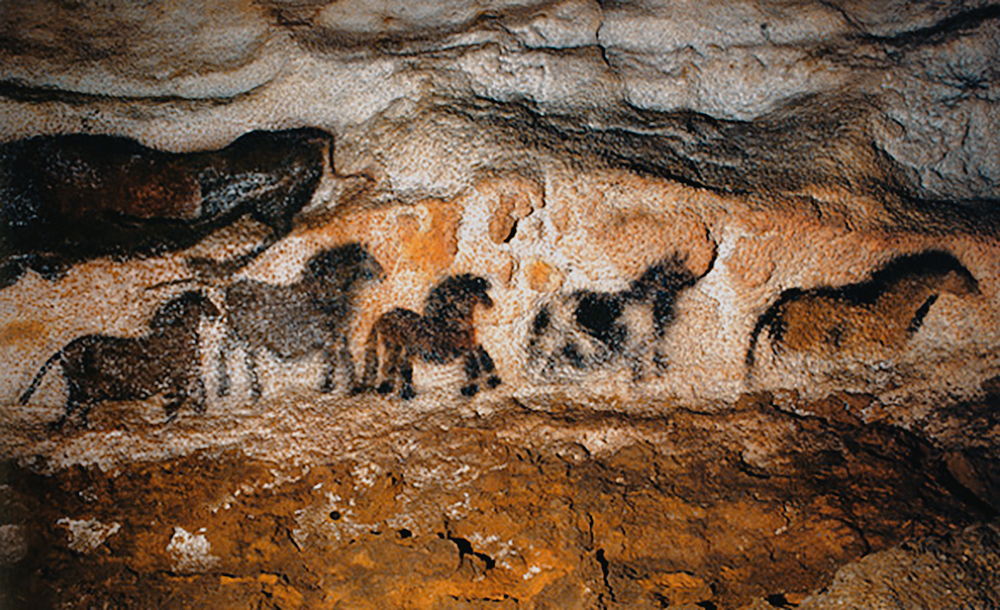
Frieze of the Small Horses
© North. Aujoulat (2003) © MCC-CNP
Equally a logical follow-upwardly to this Symposium and in keeping with its open and interdisciplinarity spirit, one can promise that at that place will be more communication betwixt specialists and that this will be made easier, either on a personal or institutional level. The vast amount of information collected must be correlated, which presents the problem of an comeback of collaboration systems between specialists and of data management. To avoid the recurrence of misunderstandings, I suggest a health study of Lascaux exist established every six months or once a year, and be made available to the public. Moreover, information technology would nearly definitely exist favourable to program for the organization of some other Symposium in three years, then as to evaluate the situation regarding actions which accept been taken in the meantime and their results, which we all hope to be positive.
Lascaux is the tragic illustration of human errors, when fluctuating age-sometime equilibrium is suddenly broken. Efforts must now be concentrated on the time to come, in coming out of the other side of the crunch that began a few years ago and to find a new climatic and biological equilibrium, never once again that which has for a long fourth dimension prevailed only notwithstanding i which will ensure the durability of the paintings and engravings.
Good can event from something bad. Our Spanish colleagues have told u.s.a. that they benefited from the precedence of Lascaux's issues in club to make decisions regarding the management of Altamira. Furthermore, thanks to the presence of our colleagues from other continents, specialists in other cultures and in other types of stone art, we accept been able to widen the conclusions to be fatigued from this crisis to other types of rock art sites worldwide.
Rock art every bit a whole is one of the most important cultural heritage assets in the history of Humanity. Lascaux is certainly one of its jewels, but the most humble of the decorated sites is a witness of ancient cultural beliefs and practices, and therefore it must be protected. Lascaux strongly reminds us of the reasons why preservation is a necessity: above all to limit the effects of human activity on any decorated sites, and on their surrounding environment. That is the main condition for their survival.
Jean CLOTTES
President of the Symposium
Rock Art Links
livingstonwrig1987.blogspot.com
Source: https://www.bradshawfoundation.com/lascaux/